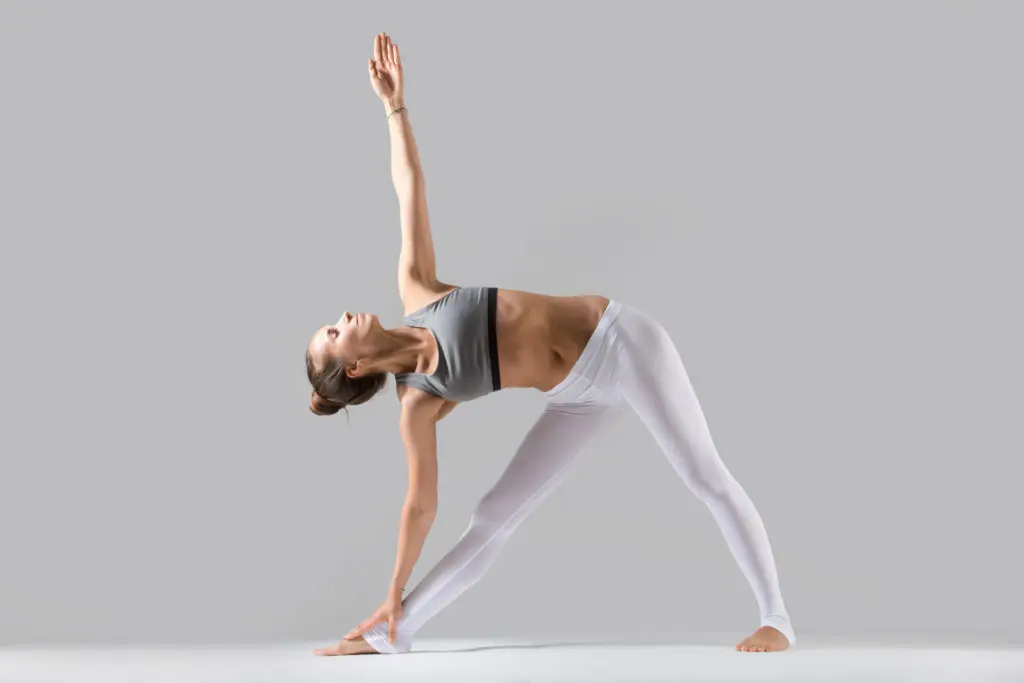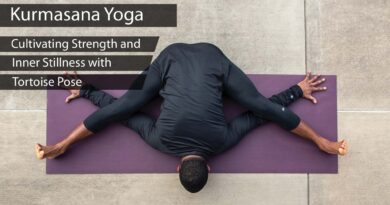Unlocking the Benefits of Utthita Trikonasana: A Step-by-Step Guide
Table of Contents
Introduction
Utthita Trikonasana, also known as Extended Triangle Pose, is a fundamental asana (pose) in yoga that offers numerous physical, mental, and emotional benefits. This standing pose is accessible to practitioners of all levels and is often included in yoga classes and sequences. In this article, we will delve into the details of Utthita Trikonasana, explore its benefits, and provide a step-by-step guide to help you practice this pose correctly.
Understanding Utthita Trikonasana
Utthita Trikonasana derives its name from the Sanskrit words “utthita” meaning extended, “trikona” meaning triangle, and “asana” meaning pose. It is called the Extended Triangle Pose because the body resembles the shape of a triangle when fully expressed in this pose.
How to Perform Utthita Trikonasana
Follow these steps to practice Utthita Trikonasana:
Step 1: Begin in a standing position at the top of your mat with your feet hip-width apart.
Step 2: Turn your right foot out 90 degrees, ensuring that the arch of your right foot aligns with the heel of your left foot.
Step 3: Inhale and extend your arms out to the sides, parallel to the ground, with your palms facing down.
Step 4: Exhale and shift your body weight to your right foot as you bend your right knee, aligning it over your ankle.
Step 5: Inhale and extend your torso to the right, directly over your right leg. Avoid leaning forward or backward.
Step 6: Exhale and extend your right arm down, placing your hand on your right shin, ankle, or the floor, depending on your flexibility. Simultaneously, extend your left arm upward, creating a straight line from your left heel to your left fingertips.
Step 7: Turn your gaze upward, towards your left hand. If it strains your neck, you can keep your gaze forward or downward.
Step 8: Hold the pose for 30 seconds to 1 minute while maintaining steady breaths.
Step 9: To release, inhale and press through your right heel, engaging your core, and slowly return to the starting position.
Step 10: Repeat the same steps on the opposite side, mirroring the alignment.
Benefits of Utthita Trikonasana
1. Strengthens the legs: Utthita Trikonasana engages and tones the muscles of the legs, including the quadriceps, hamstrings, and calves, helping to build strength and stability.
2. Stretches the hips and groins: This pose opens up the hips and stretches the inner thighs, promoting flexibility and alleviating tension in these areas.
3. Lengthens the spine: Utthita Trikonasana encourages spinal extension, relieving compression in the vertebral column and improving posture.
4. Enhances balance and coordination: By focusing on maintaining balance in the extended position, this pose cultivates balance and coordination skills, which can be beneficial in daily life.
5. Stimulates digestion and improves metabolism: The gentle twist involved in Utthita Trikonasana massages the abdominal organs, stimulating digestion, and promoting a healthy metabolism.
6. Relieves stress and anxiety: Practicing this asana helps calm the mind and release tension, thereby reducing stress and anxiety levels.

Precaution during Utthita Trikonasana
While Utthita Trikonasana (Extended Triangle Pose) is a beneficial yoga asana for strengthening the body and increasing flexibility, it’s important to practice with caution and pay attention to your body’s needs and limitations. Here are some precautions to keep in mind when practicing Utthita Trikonasana:
1. Warm-up: Before attempting Utthita Trikonasana, it’s crucial to warm up your body with gentle stretches and movements. This helps prepare the muscles and joints for the deeper stretch involved in the pose.
2. Alignment: Proper alignment is key to avoid strain or injury. Ensure that your front foot points forward, aligning with the arch of your back foot. Keep your hips squared towards the front of the mat and maintain a straight line from the top hand to the bottom hand. Avoid collapsing the chest or rounding the shoulders.
3. Modify when necessary: If you have any pre-existing injuries or conditions such as lower back pain, hip issues, or high blood pressure, it’s important to modify the pose accordingly. You can use a block under your bottom hand for support or reduce the depth of the forward bend to accommodate your body’s needs.
4. Avoid overstretching: While it’s important to challenge yourself, avoid pushing your body beyond its limits. Respect the natural range of motion in your hips, hamstrings, and spine. Gradually work on increasing your flexibility over time without forcing or straining the body.
5. Listen to your body: Pay attention to any discomfort or pain during the pose. If you experience sharp or intense pain, dizziness, or difficulty breathing, come out of the pose slowly and seek guidance from a qualified yoga instructor or healthcare professional.
6. Breathing: Maintain a steady and relaxed breath throughout the pose. Avoid holding your breath or straining while in Utthita Trikonasana. Deep, even breaths help to calm the mind and enhance the benefits of the pose.
7. Pregnancy and specific conditions: If you are pregnant, have low blood pressure, or any specific medical conditions, it is advisable to consult with a healthcare professional before attempting Utthita Trikonasana. They can provide guidance on modifications or whether it’s suitable for your individual needs.
Conclusion
Utthita Trikonasana is a versatile yoga pose that offers a wide range of benefits for both the body and mind. By incorporating this asana into your yoga practice, you can strengthenUtthita Trikonasana is a versatile yoga pose that offers a wide range of benefits for both the body and mind. By incorporating this asana into your yoga practice, you can strengthen.





